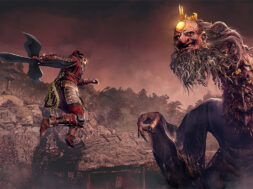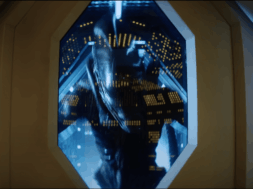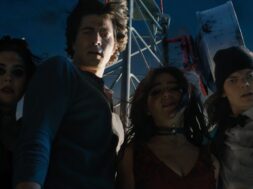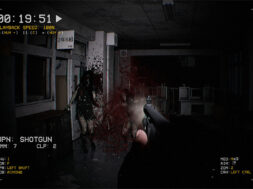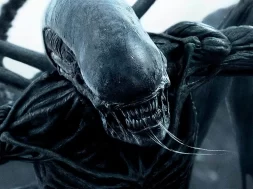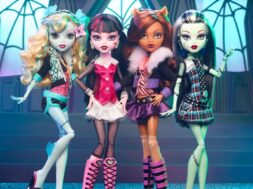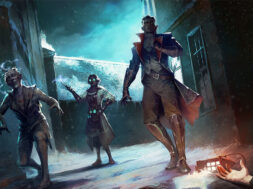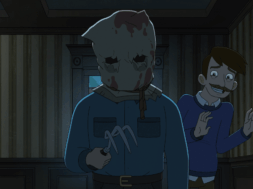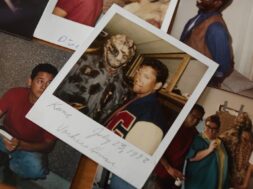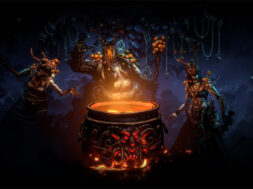2009’s big-budget studio horror was chock-full of lifeless remakes, satirical horror-comedies, and even emerging fresh takes on zombie movies, but slow-burn, ‘80s-inspired nostalgia— which we now see in droves— was never really on the slate…that is, until the masterful combo of a little slasher/Satanic cult/haunted house indie called The House of the Devil came along.
We, collectively, kind of failed Ti West’s “mumblecore” treasure that year, which turns 10 on this very Halloween Eve. Made with a humble budget of $900k and earning a mere fraction of that at the box office, we sort of let it slip it through our fingers— not fully giving it the love and support it deserved at the time, even when some of the most skeptical of film critics were hailing it as one of the best of its decade. Thankfully, through word-of-mouth and streaming, we’ve come around, and The House of the Devil has rightfully earned its place into classic status.
What makes House the beloved paragon that it has become is its marriage between unapologetically borrowing from the classics that came before it, while simultaneously being several years ahead of its time (we’ll come back around to that.) Through its aesthetic, pacing, tone, and voyeuristic tendencies, the film is a deliberate callback to the horror that we fell in love with in the ‘70s and ‘80s, and its brilliance lies within how well it nods to both of these decades of film. Its slow-burn, meticulous precision is reminiscent of Carpenter’s drawn out, stalking-before-the-actual-slashing within ‘78’s Halloween. West also incorporates camera zooms and wide shots which were entirely filmed on 16 mm, as well as an opening text with a “based on true, unexplained events” warning that recalls ‘74’s Texas Chainsaw Massacre. And, of course, long before ‘80s nostalgia in horror was trendy (and tiresome) House was giving us all the long opening credit sequences, feathered hairstyles, acid wash jeans, and Walkman dancing sequences to ‘80s hits by The Fixx that we didn’t know we needed back in 2009— yet never in a way that feels like a parody.
Cleverly, West’s screenplay was also a simplistic, bare-bones commentary on what life was like during the backdrop of the 1980s Reagan era, in which rhetorical fears of both “Satanic Panic” and “stranger danger” went widespread, and young women were concurrently being told that their independence wasn’t worth their overall safety. Interestingly, instead of subverting these ideas, West uses these fear-mongering tactics as actual scary traps for poor Samantha (Jocelin Donahue) over the course of the plot.As she desperately scrambles to responsibly find the cash for her first month’s rent, the Ulmans manipulate her into coming over to “babysit” by promising $400 on the spot, for an evening of tending to a sickly mother-in-law and eating crappy pizza that doesn’t taste right…and that proves to be the least of her troubles.She later becomes a victim of the family’s Satanic ritual, barely escaping their bloody grasp, along with a threatening lunar eclipse in tow.
As the film relays to us in the beginning, many Americans were influenced into believing in the existence of dangerous Satan-worshipping cults during this era, and House attempts to startle us into thinking those things could have been true. West coyly plays on that morality trope of ‘80s slashers as well: The more you put yourself in harm’s way, the higher your chances are to die. The most frustrating part is how intelligent and aware Samantha actually is— she’s just a college girl with financial woes trying to make something of herself, yet gets woefully punished for it— just like the ‘80s scaremongers warned. Luckily, she turns out to be somewhat of a final girl, but with way more trauma and baggage than she ever deserved.
Like any effective, low-budget indie horror that may lack in special effects and other tweaks, House relies on good ol’ fashion shock-induced frights and performances that stand out more than anything a jump scare-laden studio movie could ever do. In one of the film’s most jolting moments, AJ Bowen’s ever-creepy Victor suddenly approaches a pre-Lady Bird Greta Gerwig as Megan in her car, offering her a light for her cigarette. After realizing she is “not the babysitter,” he abruptly shoots her—mid-sentence— and blood spatters across the window shield, before you can even comprehend what you just witnessed. It knocks you off your feet and prepares you for the impending doom that House is about to bring you for the remainder of its runtime. Additionally, Donahue’s charming performance as Samantha carries the film, while the casting of Mary Woronov as Mrs. Ulman recalls a less campy version of Karen Black in Burnt Offerings. And West caps off his ‘80s love by casting Dee Wallace as Samantha’s landlady in a winking nod.
As some of the best cinema does, House gets better and feels more haunting after every repeat viewing, especially with its conclusion. Coming from a woman’s perspective, its final moments are incredibly gnawing. In one of the ballsiests attempts at not letting the oppressive patriarchy— if you will— win, Samantha tries to take her own life before accepting her “fate” aka getting raped and impregnated by Satan (and/or Tom Noonan’s Mr. Ulman too?) All Samantha ever wanted at this time was independence: her own place, an education, with no romantic partner or children, as Megan notes earlier in the film that Samantha doesn’t even like kids. So when her suicide attempt fails, and we find her unconscious at the hospital, with a nurse rubbing her stomach, telling her, “You will be just fine. Both of you”— it feels especially gutting. Although we’re relieved to see her with a pulse, Samantha is the epitome of not having rightful control over her own body, and there’s not much that is scarier than that.
Being its release came several years before the now-popularized brand of moody, atmospheric type of horror that A24 trickled into our psyches, The House of the Devil was a bit ahead of its time. Proving that restraint is key, House lures us in with a building sense of paranoid dread that creates a helplessness for not only our protagonist, but for us as well. Similar to A24’s Hereditary, The Witch, and Green Room, much of our time spent viewing House consists of feeling like a mere fly on the wall, observing and waiting for the horrible events we can just feel coming, before rewarding our patience with one of the gnarliest, bittersweet endings after a third act that is top-tier insanity. It isn’t crazy to think that perhaps the film may have been more viable had it been released within the same timeframe as the above ones mentioned.
West has reiterated in the past that he creates movies that feel authentic to what he himself would want to see on screen, versus worrying about commercial viability and appealing to mass audiences. The auteur famously wrote, directed, and edited House, collaborating with Glass Eye Pix— helmed by legendary indie filmmaker Larry Fessenden, who helped kick off West’s career by giving him some money to make his first features. With Fessenden’s support, West succeeded in creating a film that never feels like anyone else could have made it, and the film evokes that specialness.
Gems like The House of the Devil are the reason we need to keep cherishing that special pocket of independent, inventive, and made-from-little-money brand of horror films. Keep supporting the A24, Glass Eye Pix, SpectreVision, Yellow Veil Pictures, and countless other indie film studios and distributors of the world that are often bringing us the best that the genre has to offer— because we need independent horror just as much as it needs us.
